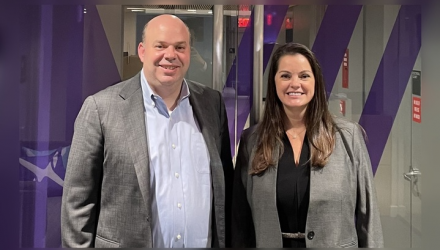After offering mutual funds for four decades, Dimensional Funds turns three years old as an ETF provider this month. It has been an impressive start and there’s much more coming. While known for expertise in small-cap value U.S. equities, Dimensional offers low-cost, low turnover strategies with active management across the asset allocation spectrum. In September, the firm was managing $100 billion in ETF assets, though market movements pushed this down to a still impressive $95 billion at the end of October.
The firm is known for having converted some mutual funds into ETFs beginning in 2021 and again in 2022. Those include the Dimensional US Core Equity 2 ETF (DFAC), which manages $20 billion in assets. The multicap DFAC has a track record dating back to 2007. While the fund was large when it converted, DFAC pulled in $250 million of new money in 2023. The ETF has a 0.17% expense ratio, a recent turnover rate of 6%, and approximately 3,000 holdings led by Microsoft, Apple, Amazon.com, Meta Platforms, and Exxon Mobil.
More Than Just Mutual Fund to ETF Conversions
According to VettaFi, Dimensional Funds pulled in $24 billion and has made no mutual fund to ETF conversions this year. All 34 ETFs available as of October had net inflows in 2023, with eight funds gathering at least $1 billion of new money. Dimensional launched new ETFs in September and one last week. The firm planned to add other new ETFs in November.
“This is the new lane for ETFs,” explained Nicole Hunter, head of ETF Capital Markets at Dimensional Fund Advisors. “Low cost, low turnover, systematic active funds — this is where clients are spending the dollars.”
The Dimensional US High Profitability ETF (DUHP) launched in February 2022 without a preexisting mutual fund record. The $3.2 billion DUHP was aided by $1.7 billion of net inflows in 2023. The ETF has approximately 180 positions with approximately one-third of assets in the top 10 holdings. While Apple and Microsoft are again the top two positions, these are followed by Eli Lilly, Broadcom, and Visa. This makes it different than DFAC. DUHP has a 2% turnover rate and a 0.21% expense ratio.
Strong Demand for Active International Equity ETFs
Dimensional also has seen strong demand for its actively managed international equity ETFs this year. These include the Dimensional International Core Equity ETF 2 (DFIC) and the Dimensional Emerging Markets Core Equity 2 (DFEM). DFIC launched in March 2022 and manages $4.2 billion in assets, due in part to $2.1 billion of new money in 2023. ASML, BP, Nestle, Novo Nodisk, and Shell are among the top positions of this ETF.
DFEM launched in April 2022 and manages $2.4 billion in assets, having added $1.3 billion so far this year. Alibaba, Infosys, Samsung Electronics, and Taiwan Semiconductor are examples of top holdings.
Active ETFs With High Trading Volume
For many advisors, these and other Dimensional ETFs are being used for long-term strategic purposes. However, we believe there is strong liquidity in the secondary market, making them appealing to large RIAs or institutional investors. For example, DFAI and DFEM traded more than 1.1 million and 700,000 shares on average, respectively, in the last 30 days.
“We do a lot of education about ETF trading,” noted Hunter. “Many people are still learning the best practices, whether they are making a large or a small trade to rebalance, or making a tax loss harvesting decision.”
Are ETF Share Classes in the Future?
While Dimensional has converted preexisting mutual funds into ETFs, the firm has additional plans to leverage its long heritage. In July, the company filed with the regulators for approval to offer ETF share classes of some of its $400 billion mutual funds.
“Advisors and institutions continue to ask for investment strategies to be delivered as both mutual funds and ETFs,” according to Gerard O’Reilly, co-CEO and chief investment officer at Dimensional Fund Advisors.
“Many mutual funds have low brokerage costs, low levels of uninvested cash, and are tax efficient, which make them good candidates for an ETF share class,” he added. “The ability to offer ETF share classes for such funds could enable more investor choice and the benefits of scale to all of the funds’ shareholders. We are hopeful the SEC will prioritize this area, which has the potential to confer substantial benefits to American investors.”
For more news, information, and analysis, visit VettaFi | ETF Trends.


